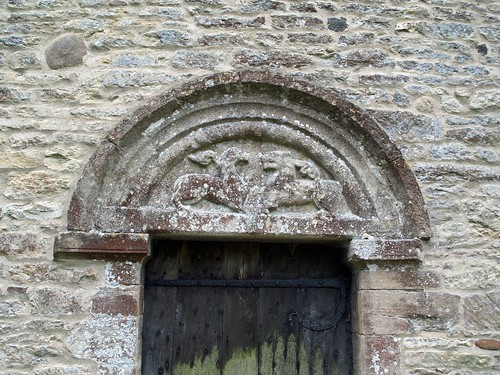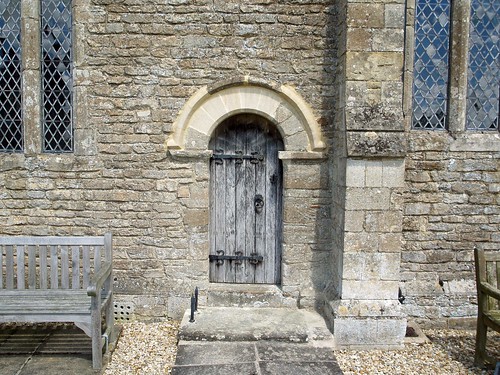ST MARGARET. A grey, aisleless church of small size. The earliest part is the tympanum of the N doorway. This is Norman, with its two affronted quadrupeds: a lion and a wingless griffin( ?). More evidence of the Norman church is to be found built into the S wall of the vestry, e.g. some zigzag and the fragment of a colonnette. Then follows the priest’s doorway, which must be c.1200. Good early CI3 S doorway with one order of shafts with shaft-rings and leaf capitals. Arch with many mouldings including rolls with fillets. Good late C13 chancel S windows with simple but attractive geometrical tracery. The chancel arch corresponds to them. Above it two deep recesses in the nave E wall. A former S chapel has Dec details. The small W tower is Dec too - see the arch towards the nave* and the W lwindow. The tower originally carried a spire. - FONT. Octagonal, Norman, with scalloped base and underside. - BENCHES. Three Perp ones, of the buttressed type. - PLATE. Cup of c.1570 and matching Cover Paten.
* The VCH calls it c.1500 with re-used stones from c.1330.
COVINGTON. It is close to what is known as the Three Shire Stone at the meeting of the county with Bedfordshire and Northants, a village with a 17th century hall and a church on a hill among great elms.
It has something within easy reach of these three counties which can be matched only once or twice in this country, the doorway into its Norman church. We come up to it and find it almost as the Normans saw it, for it has looked as it does, wood and iron and stone, the plain door on these very hinges, set in these very stones, ever since the Normans lived in Covington. This north doorway is as its masons and carpenters and ironworkers must have seen it; it is believed to be unchanged since they built the church. The wind and rain of centuries has worn away the sculpture in the tympanum above the door, but the quaint carving the Norman mason left for us to see can still be recognised; it shows a bird riding a griffin and a monkey riding a lion.
Much of the church is as the Normans saw it. The 13th century chancel has a doorway through which the Norman priest would go, and there is still here the font at which he christened the children, though it has a modern cover, crowned with a model of a church. High up on the wall above the chancel arch is a window with two grinning heads keeping watch on the Norman nave. There is a chest made in 1700, a group of Tudor bench-ends, a medieval stone coffin, and a fragment of 14th century glass.
It has something within easy reach of these three counties which can be matched only once or twice in this country, the doorway into its Norman church. We come up to it and find it almost as the Normans saw it, for it has looked as it does, wood and iron and stone, the plain door on these very hinges, set in these very stones, ever since the Normans lived in Covington. This north doorway is as its masons and carpenters and ironworkers must have seen it; it is believed to be unchanged since they built the church. The wind and rain of centuries has worn away the sculpture in the tympanum above the door, but the quaint carving the Norman mason left for us to see can still be recognised; it shows a bird riding a griffin and a monkey riding a lion.
Much of the church is as the Normans saw it. The 13th century chancel has a doorway through which the Norman priest would go, and there is still here the font at which he christened the children, though it has a modern cover, crowned with a model of a church. High up on the wall above the chancel arch is a window with two grinning heads keeping watch on the Norman nave. There is a chest made in 1700, a group of Tudor bench-ends, a medieval stone coffin, and a fragment of 14th century glass.



No comments:
Post a Comment